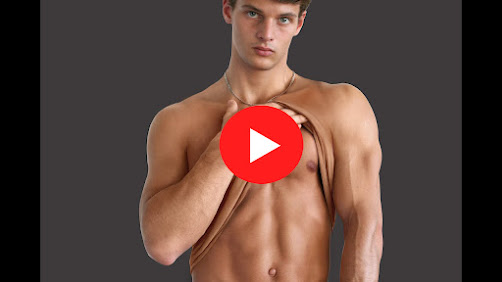The Art of Men's Body Photo Editing in Photoshop: Redefining Perfection
The Art of Men's Body Photo Editing in Photoshop: Redefining Perfection
Introduction
In the age of social media and digital self-expression, the concept of the "ideal" male body has become increasingly prominent. With the rise of platforms like Instagram and the constant sharing of images, it's no surprise that many men are seeking ways to enhance and present their bodies in the best possible light. Photoshop, the powerful image editing software, has become a valuable tool for this purpose. In this article, we will explore the world of men's body photo editing in Photoshop, discussing its popularity, the ethics surrounding it, and the techniques involved.
The Popularity of Men's Body Photo Editing
The desire to look one's best in photos is nothing new. In the past, people relied on flattering angles, lighting, and posing to enhance their appearance. However, the digital age has taken this to a whole new level. Photoshop, in particular, has given individuals the power to manipulate their images and achieve their idealized self-image.
Men's body photo editing in Photoshop has gained popularity for several reasons:
Social Media Influence: Social media platforms are overflowing with images of people showcasing their bodies, whether it's in fitness transformations, vacation photos, or everyday selfies. The pressure to fit into societal standards of beauty is immense, leading many to seek ways to enhance their own images.
Fitness Culture: The fitness industry has grown exponentially in recent years, and with it, the demand for perfectly toned and muscular bodies. Men often strive to achieve an aesthetic look that can be difficult to maintain or achieve naturally.
Image Perfection: With Photoshop, people can fine-tune their imperfections, creating a more polished image of themselves. This control over one's appearance is tempting for anyone who wants to look their best in photos.
The Ethics of Men's Body Photo Editing
While the popularity of body photo editing is undeniable, it's important to consider the ethical implications of this practice. Body image issues, unrealistic beauty standards, and the potential for deceit all play a role in the ethical debate surrounding Photoshop editing.
Unrealistic Beauty Standards: The most significant ethical concern is the perpetuation of unrealistic beauty standards. By manipulating their bodies in Photoshop, men contribute to the culture of unattainable perfection, which can have detrimental effects on others' self-esteem.
Deception: Photoshop can be used to create a false representation of oneself. This deception can lead to disappointment and unrealistic expectations when people meet in real life, causing harm to relationships and self-esteem.
Body Dysmorphia: Excessive body photo editing can also lead to body dysmorphic disorder, a mental health condition characterized by an obsessive focus on perceived flaws. Those who continually edit their photos may develop an unhealthy preoccupation with their appearance.
Impact on Mental Health: The relentless pursuit of the "perfect" image can take a toll on mental health, leading to anxiety, depression, and low self-esteem, as individuals constantly compare themselves to the idealized images they create.
Men's Body Photo Editing Techniques
For those interested in exploring men's body photo editing in Photoshop, there are several key techniques that can help achieve desired results. It's essential to approach this practice with caution and a commitment to ethical editing. Here are some popular techniques:
1. Skin Retouching: Smooth out blemishes, acne, and imperfections using the Healing Brush or Clone Stamp tool. However, be cautious not to overdo it, as it can make the image appear unnatural.
2. Body Sculpting: Achieve a more muscular or toned look by using the Liquify tool to push and pull pixels. This tool can create the illusion of a more defined chest, abs, or arms.
3. Color Correction: Adjust the colors of your image to enhance your tan, make your skin look smoother, or bring out the definition in your muscles.
4. Background Replacement: Change the background to match the overall aesthetic you want to convey in your photo.
5. Light and Shadow: Use Dodge and Burn tools to add depth and definition to your muscles and body contours. This technique can create a more sculpted appearance.
6. HDR Effects: Apply high dynamic range effects to make your image pop and appear more vibrant, adding to the overall appeal of your photo.
7. Image Composition: Combine multiple images to achieve a desired look, whether it's adding a beach backdrop to your vacation photo or combining your best features from various shots.
Conclusion
Men's body photo editing in Photoshop is a controversial practice that has become increasingly popular due to the influence of social media, fitness culture, and the desire for image perfection. While it offers a way to enhance one's appearance, it is essential to consider the ethical implications of these edits. Unrealistic beauty standards, deception, and potential harm to mental health are all valid concerns.
If you choose to explore men's body photo editing, do so with care and a commitment to ethical editing. Remember that perfection is a subjective and ever-changing concept, and the most important thing is to be comfortable in your own skin. Photoshop can be a powerful tool for enhancing images, but it should never replace self-acceptance and authenticity in the real world.


Comments
Post a Comment